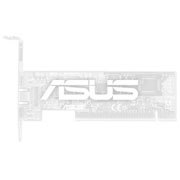Download Microbits Driver
Download the Scratch microbit hex file. Plug your microbit into your computer via USB. The microbit should now show up as a removable drive in Windows. Drop the file you downloaded onto the microbit removable drive. Download ZIP Launching GitHub Desktop. If nothing happens, download GitHub Desktop and try again. Launching GitHub Desktop. If nothing happens, download.
Download Microbits Driver Printer
Windows 8 and 10 should find and install drivers automatically. Windows 7 users may need to manually install drivers using one of the links below. Be sure to plug in your board before installing the drivers. Serial drivers for BBC micro:bit and Calliope mini (mbed) Serial drivers for Circuit Playground Express (Adafruit boards) Mac OS.
Python is one of the world’s most popular programming languages. Every day, without realising, you probably use software written using Python. All sorts of companies and organisations use Python for a diverse range of applications. When you plug the micro:bit into your computer's USB socket, it will appear on your computer like a USB memory stick called MICROBIT. Download your program as a.hex file from the code editor to your computer, usually to your downloads folder. Then drag and drop the.hex file on to the MICROBIT drive.
Read the announcement of the new micro:bit and the information about preparing for it
There are a huge range of software platforms and tools that make the micro:bit work as well as it does. This page outlines what they are and redirects you to more detailed explanations of the different projects.
Overview
- High level programming languages
- From coding environment to micro:bit
Software for the micro:bit consists of two main groups:
Download Microbits Driverpack

software that runs on your computer (host), for example the browser editor
software that runs on the micro:bit (target)
Typically, a program is written on the host computer and then transferred to the micro:bit over USB.
There are actually two chips on the micro:bit, one that is running the DAPlink software entirely to facilitate the flashing (KL26V1/KL27V2) and one that actually runs the user’s code (nRF51V1/nRF52V2).
High level programming languages
The ‘high level’ programming languages for the micro:bit break down into two broad categories
Compiled languages: your program is compiled to Arm assembler or some other kind of bytecode before being copied onto the micro:bit.
Interpreted Languages: both your script and an interpreter for it are copied onto the micro:bit. Because the interpreter is on the micro:bit itself, these languages typically also allow you to program the micro:bit ‘live’ over USB by typing commands.
Compiled languages

C/C++, while certainly compiled, is not considered a high-level language in this context
In order to ensure that the micro:bit online code editors could scale to support 1M deployed boards, Microsoft built MakeCode, an in-browser-compiler written in TypeScript.
This process is explained in full in the In browser compiler page, and in fantastic detail at TouchDevelop in 208 bits.
Download Microbits Drivers
These in-browser-compilers do not compile the whole of the software stack, but just the user’s script. Function calls and low level functions are handled by the micro:bit runtime and Mbed. A pre-compiled runtime image is included in the browser and concatenated with the compiled script before being presented for download.

Interpreted languages
In the official micro:bit editors, only Python is interpreted. L.p cameras wireless. This is done by the use of the MicroPython interpreter.
The details of this are documented in the MicroPython page.
There is also a port of the Javascript interpreter Espruino that runs on the micro:bit.
Coding environments and IDEs
There are a huge number of possible coding environments that you can use to program the micro:bit.
Among the most popular are the official ones listed at http://microbit.org/code as well as the offline Mu editor.
Here’s a non-exhaustive list of possible code editors for use with the micro:bit: please add any you know about that are not here
Download Microbits Driver Download
From coding environment to micro:bit
Each of the coding environments generates a special file called a .hex file, which contains code for your micro:bit, written in a format it can understand.
The micro:bit code is updated by dragging a .hex file onto the MICROBIT drive that appears on your computer, when you plug in the micro:bit. It looks just like a USB memory stick to your computer (the flash drive is actually emulated by the DAPLink software)
It is also possible to ‘flash’ code to your micro:bit by using a mobile app, and using the Bluetooth communications interface from your mobile phone.
You can read more about bluetooth flashing or bluetooth apps by following these links.
micro:bit Low Level (C/C++) Software Stack
When you write an application for your micro:bit, other pieces of software are joined together with your application to make up the final .hex file that is flashed. This code consists of various lower level software components, such as:
DAL/CODAL (sometimes called the runtime), written in C++ by Lancaster University. The DAL abstracts the facilities of the micro:bit into a common set of functions that can be used by all coding languages. The high level block functions in MakeCode map almost directly onto equivalent C/C++ calls in the runtime. MicroPython requires less use of the DAL.
Arm Mbed The Arm Mbed SDK provides standardised drivers for MCU peripherals and abstracts most of the low level hardware details of different MCUs, meaning that micro:bit software can be easily run on other hardware. This includes an abstraction for BLE, the Mbed BLE api.
Nordic nRF5 SDK Mbed itself builds on top of the Nordic nRF5 SDK, the component provided by Nordic to assist programmers in using their hardware.
MicroPython interpreter If you are using Python, then the whole MicroPython language interpreter is joined to your application to make up the .hex file. MicroPython on the micro:bit uses Mbed underneath, though MicroPython also runs on a wide range of other hardware platforms.


